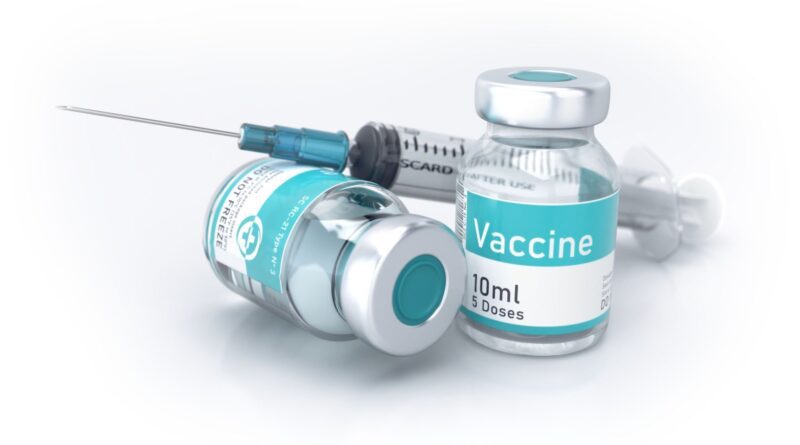How were vaccines invented
How were vaccines invented?
Vaccines have revolutionized modern medicine and have saved countless lives by providing immunity to infectious diseases. But have you ever wondered how vaccines were invented?
The history of vaccines dates back to ancient times when people would try to build immunity to a disease by exposing themselves to small amounts of it. However, the first modern vaccine was invented by an English physician, Edward Jenner, in 1796.

Jenner observed that milkmaids who contracted cowpox, a relatively mild disease, seemed to be immune to the much deadlier smallpox. To test his theory, Jenner inoculated an 8-year-old boy, James Phipps, with material from a cowpox blister. Phipps developed a mild case of cowpox but did not contract smallpox when exposed to it later, proving Jenner’s hypothesis.
Jenner’s discovery led to the development of other vaccines, such as the rabies vaccine by Louis Pasteur and the tuberculosis vaccine by Albert Calmette and Camille Guerin. Today, vaccines are developed using a variety of techniques, including weakened or killed pathogens, pieces of the pathogen, or genetic material from the pathogen, all of which trigger an immune response in the body without causing the disease.
The development of vaccines has been instrumental in preventing the spread of infectious diseases and has saved millions of lives worldwide. Vaccines have eradicated smallpox, reduced the incidence of polio, and prevented countless cases of measles, mumps, rubella, and other diseases.

The concept of vaccination dates back to ancient times when people would expose themselves to small amounts of a disease to build immunity. However, the first modern vaccine was invented by Edward Jenner in 1796.
Jenner noticed that milkmaids who contracted cowpox, a relatively mild disease, seemed to be immune to the much deadlier smallpox. He conducted an experiment by taking material from a cowpox blister and inoculating an 8-year-old boy, James Phipps, with it. Phipps developed a mild case of cowpox but did not contract smallpox when exposed to it later, proving Jenner’s hypothesis.
Jenner’s discovery led to the development of other vaccines, such as the rabies vaccine by Louis Pasteur and the tuberculosis vaccine by Albert Calmette and Camille Guerin. Today, vaccines are developed using a variety of techniques, including weakened or killed pathogens, pieces of the pathogen, or genetic material from the pathogen, all of which trigger an immune response in the body without causing the disease. Vaccines have been instrumental in preventing the spread of infectious diseases and have saved millions of lives worldwide.
In conclusion, vaccines have had a tremendous impact on public health and have been instrumental in preventing the spread of infectious diseases. The invention of vaccines, starting with Edward Jenner’s discovery of the smallpox vaccine, has paved the way for the development of other life-saving vaccines. Today, vaccines continue to be a critical tool in the fight against infectious diseases and are an essential component of public health strategies worldwide.
Where was the first vaccine invented?
Vaccines are an essential component of modern medicine, providing immunity to infectious diseases and saving countless lives. But where was the first vaccine invented, and how did it come about?

The first vaccine was invented in 1796 by an English physician named Edward Jenner. Jenner noticed that milkmaids who had contracted cowpox, a relatively mild disease, seemed to be immune to the much deadlier smallpox. He hypothesized that by infecting a person with cowpox, they could develop immunity to smallpox.
To test his theory, Jenner inoculated an eight-year-old boy named James Phipps with material from a cowpox blister. Phipps developed a mild case of cowpox but did not contract smallpox when exposed to it later, proving Jenner’s hypothesis. This discovery paved the way for the development of other vaccines, including the rabies vaccine by Louis Pasteur and the tuberculosis vaccine by Albert Calmette and Camille Guerin.
Jenner’s discovery was a significant milestone in the field of immunology and public health. His smallpox vaccine was instrumental in the eradication of the disease, which had plagued humanity for centuries. Smallpox was officially declared eradicated in 1980, thanks to widespread vaccination campaigns around the world.
Today, vaccines are developed using a variety of techniques, including weakened or killed pathogens, pieces of the pathogen, or genetic material from the pathogen. These vaccines trigger an immune response in the body without causing the disease, providing immunity and protecting against future infections.
In conclusion, the first vaccine was invented by Edward Jenner in 1796. His discovery of the smallpox vaccine paved the way for the development of other life-saving vaccines. Today, vaccines are critical tools in the fight against infectious diseases, and they continue to play a vital role in public health strategies worldwide.
Who started vaccination first?

The practice of vaccination, or intentionally exposing a person to a disease to build immunity, has been around for centuries. However, the first modern vaccine was developed by an English physician named Edward Jenner in 1796.
Jenner observed that milkmaids who had contracted cowpox, a relatively mild disease, seemed to be immune to the much deadlier smallpox. To test his theory, Jenner inoculated an eight-year-old boy named James Phipps with material from a cowpox blister. Phipps developed a mild case of cowpox but did not contract smallpox when exposed to it later, proving Jenner’s hypothesis.
Jenner’s discovery was a significant milestone in the field of immunology and public health. His smallpox vaccine was instrumental in the eradication of the disease, which had plagued humanity for centuries. Smallpox was officially declared eradicated in 1980, thanks to widespread vaccination campaigns around the world.

Before Jenner’s discovery, however, there were other attempts at vaccination. For example, in China, as early as the 10th century, people were known to blow powdered smallpox scabs into the noses of healthy individuals to build immunity. In India, a similar practice known as variolation was used, which involved scratching the skin with a smallpox scab.
The modern practice of vaccination has evolved significantly since Jenner’s time. Today, vaccines are developed using a variety of techniques, including weakened or killed pathogens, pieces of the pathogen, or genetic material from the pathogen. These vaccines trigger an immune response in the body without causing the disease, providing immunity and protecting against future infections.
In conclusion, while the practice of vaccination has been around for centuries, the first modern vaccine was developed by Edward Jenner in 1796. His discovery of the smallpox vaccine was a significant milestone in the field of immunology and public health, and it paved the way for the development of other life-saving vaccines. Today, vaccines continue to be critical tools in the fight against infectious diseases, protecting individuals and populations around the world.








Pingback: Why is health insurance important? - AFitHelp
Pingback: How long are you contagious with human metapneumovirus - AFitHelp
Pingback: Will Drinking Water Reduce Protein in Urine? - AFitHelp